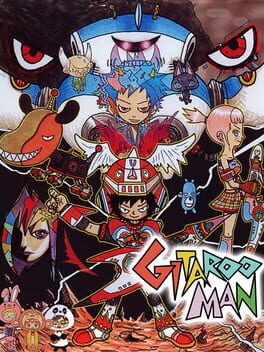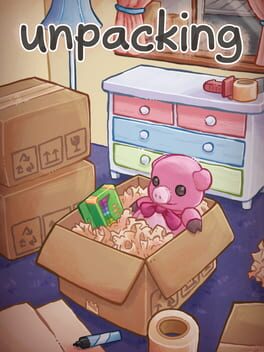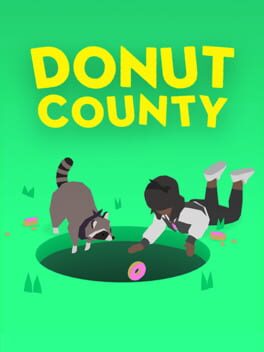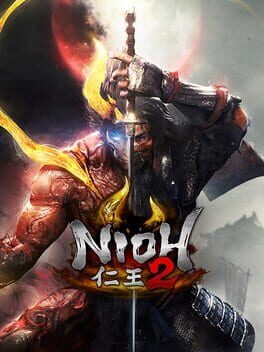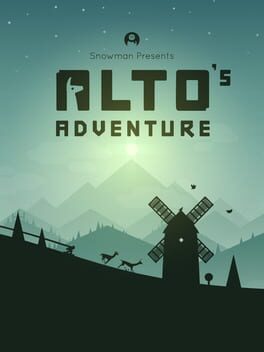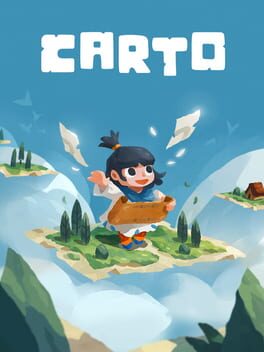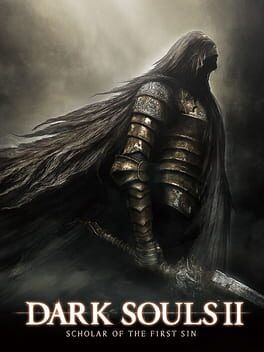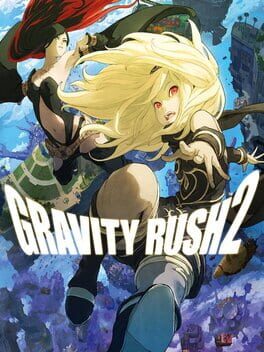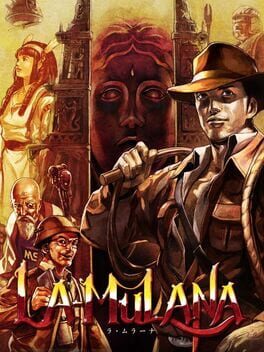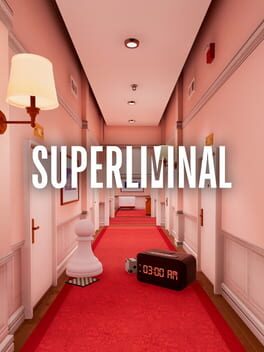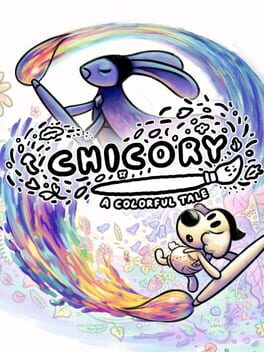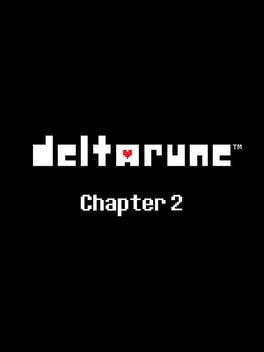AutumnLily
2001
2021
I really enjoyed the gentle environmental storytelling here, so many details that can be inferred from what items stick around between moves and which ones fall behind which in turn informs how you choose to sort and decorate these rooms, making the practical layout line up as best as possible with your understanding of the protagonist and how they'd use the space. There's some really lovely stuff here about how as we grow we both keep some parts of ourself whilst shedding others, and how moving home can be a moment that brings these changes into focus.
As much as those aspects of the game resonated, I'm filing Unpacking under "I wish this was a bit less of a game". At the end of every level, after decking out your new home, the game will highlight any objects that are out of place with a red outline if they're in the 'wrong' place, and then you get the job of placing each of those items in however many locations until they're in the 'right' place instead. So many of these placement rules feel arbitrary or even downright silly, and whilst I understand that the developers don't want you doing nonsense like putting toilet paper in the kitchen sink I did find myself wishing that I could be trusted a bit more to place things where they feel right to me. Not dissimilarly, everything feels a bit too neat to me at times; so often the amount of underwear you have will perfectly fill exactly one drawer, for example, which does partly undo the feeling of this as a life being lived.
Still very much liked the vibes of this game, and generally enjoyed the experience.
As much as those aspects of the game resonated, I'm filing Unpacking under "I wish this was a bit less of a game". At the end of every level, after decking out your new home, the game will highlight any objects that are out of place with a red outline if they're in the 'wrong' place, and then you get the job of placing each of those items in however many locations until they're in the 'right' place instead. So many of these placement rules feel arbitrary or even downright silly, and whilst I understand that the developers don't want you doing nonsense like putting toilet paper in the kitchen sink I did find myself wishing that I could be trusted a bit more to place things where they feel right to me. Not dissimilarly, everything feels a bit too neat to me at times; so often the amount of underwear you have will perfectly fill exactly one drawer, for example, which does partly undo the feeling of this as a life being lived.
Still very much liked the vibes of this game, and generally enjoyed the experience.
2018
Very charming and chilled out. I can definitely understand criticising this game for not doing enough with its concept (in particular the puzzles are all incredibly simple), or having the levels be so deeply linear (in stark contrast to the Katamari games), but considering how many games nowadays are Far Too Long it was lovely playing something so confident in its concision.
2020
One of the easiest ways to turn me off a game is to say it features skill trees, diabloot and a mass of unnecessary systems. To my surprise however, despite a rough first handful of hours, the systems of Nioh 2 really started to grow on me. I'm certainly not smart enough to wrap my head around the nuances of stance-switching or how to take full advantage of the blacksmith, and the looting system does in fact suck as you proceed to sell well over 99% of the gear you pick up, but there's a lot of really good stuff here; the magic and ninja skills both rule giving you a wide variety of ways to tune your play-style and allowing basically all builds to have easy access to some fun tools, the design of the bow-and-arrow in this game lends itself so well to both stealthily sneaking around but also to frantically picking off enemies as they charge towards you and the bow being so good means level and encounter design can be handled in a way that acknowledges you will be using the bow a bunch (something that Dark Souls, with its clunky bow set-up, would never be able to get away with), and there's just generally a lot of options for how to craft your build even if like me you don't really understand half the systems in the game. And so, what I feared might be the thing to turn me off the game actually became possibly my favourite part.
I think my biggest complaint with Nioh 2 ultimately boils down to it being too long, and there just being too much content. Even if you ignore all the side content in the game the playtime is still massive and yet well over 30 hours in I was still seeing the same collection of yokai and human enemies that I'd been fighting all along; the pool of enemies is very slim for a game that is so large, and no enemy is allowed to remain a unique, memorable encounter with everything you find instead becoming fodder to be sprinkled throughout every region for the rest of the game. The gorgon enemies were really memorable when I first encountered them, perfectly suiting the location they debut in and serving as a nice build-up to the snake boss, only for those very same gorgons to be repeatedly re-used thereafter in places that made a lot less sense; it's exhausting having every cool moment get reused so aggressively for the sake of padding out the game.
Level design suffers similarly too as, even if you ignore the side content that largely straight up reuses levels you've beaten, a lot of the levels feel just so similar; the fifth? eighth? tenth? time I found myself fighting through yet another Japanese castle estate, both blending together with all the others before it and blending together with itself as so many of the streets start to just look the same, I kind of lost all hope for the game actually wowing me rather than just going through the motions. There's some nice moments in there, and the gameplay loop is very solid, but sometimes it feels like the gameplay loop - and the desire to make the gameplay loop last for as long as humanly possible - is all there really is.
Even the story suffers from the game's gargantuan size. I don't know if I would have enjoyed it more were the game smaller - there are a lot of characters and basically none of them did the game try to make me care about - but it's kind of just set up to fail because there will often be as many as a couple hours between individual story beats as you have to plow your way through yet another massive level to get to the next cutscene; and again, this is if you aren't doing any side-content.
This review likely comes off as very negative, so to be clear; much of my time with this game was enjoyable, and a few of these problems only started to truly nag at me after I had been playing for quite a while. The systems are surprisingly good, many of the boss battles are great, but my fun little electricity-based build I threw together felt like it was already as complete as it would ever be and I am apparently a bit under two-thirds of the way through the game and even I - someone who tries to finish almost any game they play - reached the point where I just can't bring myself to care anymore. There are only so many times I can run down the same hallways and fight the same enemies with the same moves before I start to wish the game would hurry itself towards actually wrapping up.
I think my biggest complaint with Nioh 2 ultimately boils down to it being too long, and there just being too much content. Even if you ignore all the side content in the game the playtime is still massive and yet well over 30 hours in I was still seeing the same collection of yokai and human enemies that I'd been fighting all along; the pool of enemies is very slim for a game that is so large, and no enemy is allowed to remain a unique, memorable encounter with everything you find instead becoming fodder to be sprinkled throughout every region for the rest of the game. The gorgon enemies were really memorable when I first encountered them, perfectly suiting the location they debut in and serving as a nice build-up to the snake boss, only for those very same gorgons to be repeatedly re-used thereafter in places that made a lot less sense; it's exhausting having every cool moment get reused so aggressively for the sake of padding out the game.
Level design suffers similarly too as, even if you ignore the side content that largely straight up reuses levels you've beaten, a lot of the levels feel just so similar; the fifth? eighth? tenth? time I found myself fighting through yet another Japanese castle estate, both blending together with all the others before it and blending together with itself as so many of the streets start to just look the same, I kind of lost all hope for the game actually wowing me rather than just going through the motions. There's some nice moments in there, and the gameplay loop is very solid, but sometimes it feels like the gameplay loop - and the desire to make the gameplay loop last for as long as humanly possible - is all there really is.
Even the story suffers from the game's gargantuan size. I don't know if I would have enjoyed it more were the game smaller - there are a lot of characters and basically none of them did the game try to make me care about - but it's kind of just set up to fail because there will often be as many as a couple hours between individual story beats as you have to plow your way through yet another massive level to get to the next cutscene; and again, this is if you aren't doing any side-content.
This review likely comes off as very negative, so to be clear; much of my time with this game was enjoyable, and a few of these problems only started to truly nag at me after I had been playing for quite a while. The systems are surprisingly good, many of the boss battles are great, but my fun little electricity-based build I threw together felt like it was already as complete as it would ever be and I am apparently a bit under two-thirds of the way through the game and even I - someone who tries to finish almost any game they play - reached the point where I just can't bring myself to care anymore. There are only so many times I can run down the same hallways and fight the same enemies with the same moves before I start to wish the game would hurry itself towards actually wrapping up.
2015
Alto's Adventure makes me wonder if endless-runner games - even absent of the predatory microtransaction bullshit that plagues this genre - just have an inherent harmfulness to them that you have to actively resist when designing them. Sure Alto's Adventure never once asked for me to give it money but even despite this addiction loops are still baked so deeply into the game's core, so many little aspects that try to make you compulsively, instinctively start 'one more run' until suddenly you're ten more runs deep, deeply cynical, hollow design that wants you to give up your agency. It is less rotten that its brethren, and even has moments where it is legitimately pleasant to play, but I still think this game's attitude towards its players is just unforgivable.
2020
The cutesy indie game habit of sanding every conceivable edge off is frustratingly in full force here. The map-orientation-based puzzle gameplay shows some promise early on but Carto is afraid to truly follow through on this and show the real potential of these mechanics either because it doesn't know how to or because it's afraid that doing so would risk alienating some of its audience. The overall quality of the game is honestly better than this rating indicates, but I found the experience to ultimately just be so disappointing in how underdeveloped and utterly toothless it is.
Despite its title this can't help be feel like as much a sequel to Demon's Souls. Partly this is down to the structure of the game, a central hub area branching off into a few different independent linear routes that you can tackle in any order you want before the game ultimately culminates in you finding and killing the monarchy of this land.
Partly this is down to the almost reckless creativity on display. If Dark Souls took the things from Demon's Souls that really worked and cut away the bits that arguably didn't, Dark Souls 2 has not a care in the world instead saying lets fuck around and find out. This was very much to my frustration in my first playthrough, but returning to this game a year later a lot of the things that previously frustrated me are honestly just endearing. As rough edges go, I think there's a lot of charm and personality to these ones.
Returning to this game in a post-Elden Ring world was also a lot of fun to me. People disparagingly compare that game to Dark Souls 2 occasionally, but I feel like playing Elden Ring taught me a lot about how to enjoy playing Dark Souls 2. It turns out a lot of the parts of Dark Souls 2 that are decried as being unfair are actually much more reasonable when you take advantage of all the tools the game gives you. This playthrough I abandoned my usual approach of just two-handing the chonkiest sword I could find all by my lonesome to instead play an extremely-multiclass build (turns out the excessive number of levels DS2 hands you are perfect for enabling you to dabble in everything) with summons alongside me and I actually had just a great time.
That's not to say there aren't some problems with the game even outside of the notorious Dark Souls 2 weirdness, and the last portion of my run was honestly a bit exhausting; I think the pile of dlc the game has is both very overhyped, and kind of excessive considering how gargantuan the base game already is. That said, somehow, I sit here a convert. Despite all its problems Dark Souls 2 is actually a rather delightful oddity.
Partly this is down to the almost reckless creativity on display. If Dark Souls took the things from Demon's Souls that really worked and cut away the bits that arguably didn't, Dark Souls 2 has not a care in the world instead saying lets fuck around and find out. This was very much to my frustration in my first playthrough, but returning to this game a year later a lot of the things that previously frustrated me are honestly just endearing. As rough edges go, I think there's a lot of charm and personality to these ones.
Returning to this game in a post-Elden Ring world was also a lot of fun to me. People disparagingly compare that game to Dark Souls 2 occasionally, but I feel like playing Elden Ring taught me a lot about how to enjoy playing Dark Souls 2. It turns out a lot of the parts of Dark Souls 2 that are decried as being unfair are actually much more reasonable when you take advantage of all the tools the game gives you. This playthrough I abandoned my usual approach of just two-handing the chonkiest sword I could find all by my lonesome to instead play an extremely-multiclass build (turns out the excessive number of levels DS2 hands you are perfect for enabling you to dabble in everything) with summons alongside me and I actually had just a great time.
That's not to say there aren't some problems with the game even outside of the notorious Dark Souls 2 weirdness, and the last portion of my run was honestly a bit exhausting; I think the pile of dlc the game has is both very overhyped, and kind of excessive considering how gargantuan the base game already is. That said, somehow, I sit here a convert. Despite all its problems Dark Souls 2 is actually a rather delightful oddity.
Aria of Sorrow is a huge step up over its two immediate predecessors - Harmony of Dissonance and Circle of the Moon - with the soul system being decently compelling, a variety of weapons to mix up the gameplay experience as you explore the castle, and for the first time since Symphony of the Night the castle and bosses actually have some personality here. The only really clear step back is that Aria is sorely lacking in regards to secret items scattered around the castle for you to collect, with what would previously have been permanent health upgrades or such being replaced instead with myriad potions. Truly nothing will make you feel so slighted for fighting your way to the end of a hidden hallway just to add another super potion to your inventory that you could have just bought from the store instead.
That said, even at its very peak I can't help but find the wave of GBA Igavanias to be weirdly lacking, and perhaps more broadly I find the Metroid half of Metroidvania to be more appealing than the Castlevania half? These portable Igavanias just feature a whole lot of fighting your way through hallways of identical enemies, lots of tedious backtracking through said hallways that leaves me wishing even a single warp point could please just be placed near a save point, using money almost exclusively to buy potions so that you can brute force your way through any boss in your path. If the Metroid side of this split read as tense, atmospheric games that ask that you pay attention to your environment, then the Castlevania side of it are power fantasies where you make the number go as high as possible and heal-tank your way through anything in your path. Aria of Sorrow is easily the best of the trio of Igavanias found on the GBA, but even then stands as a not-particularly-nourishing experience for me, sadly.
That said, even at its very peak I can't help but find the wave of GBA Igavanias to be weirdly lacking, and perhaps more broadly I find the Metroid half of Metroidvania to be more appealing than the Castlevania half? These portable Igavanias just feature a whole lot of fighting your way through hallways of identical enemies, lots of tedious backtracking through said hallways that leaves me wishing even a single warp point could please just be placed near a save point, using money almost exclusively to buy potions so that you can brute force your way through any boss in your path. If the Metroid side of this split read as tense, atmospheric games that ask that you pay attention to your environment, then the Castlevania side of it are power fantasies where you make the number go as high as possible and heal-tank your way through anything in your path. Aria of Sorrow is easily the best of the trio of Igavanias found on the GBA, but even then stands as a not-particularly-nourishing experience for me, sadly.
2017
I'm kind of amazed how much this game endeared itself to me considering how much I do not enjoy so many core parts of the gameplay. The mission design is the biggest culprit here; lots of incessantly running back and forth between npcs to deliver information, spamming the talk button on every person in an area until one actually responds to you, ponderous stealth missions that can often be trivialised due to you being able to fly and walk on walls. The combat has you fighting the same five enemies all throughout the game's playtime as you spam your same small arsenal of moves in the same way you did fifteen hours ago, the talismans and level-up system cram in rpg mechanics that are largely superfluous to the experience, and any of the challenges that place demands on your dexterity are undone by the controls being fairly sloppy and imprecise.
But despite all of this, I actually had a pretty good time and even checked out some of the side-content after completing the main storyline. Part of this is the wonderful art direction, the charming characters, the moments of wacky creativity, the game certainly has things going for it outside of the actual gameplay, but mostly the big draw here is the vibes. A bit of a weird comparison, but Gravity Rush 2 actually reminds me pretty strongly of Super Mario Sunshine; sloppy and often frustrating gameplay, especially when you're trying to engage with what the game wants you to actually be doing, but such a relaxing, fun atmosphere to everything that just existing in these spaces carries a certain joy to it regardless. The big difference here is that whilst Sunshine has enclosed levels, and is always nudging you along towards your next accomplishment, Gravity Rush 2 is an open world game that is very content to let you just fly around achieving not-very-much if that's what you really want to do. The moment I escaped the starting area and found the open world I legit spent over three hours flying around it, weaving my way through pieces of largely-meaningless currency that were strewn about, rather than engaging with any of the actual Content, because the vibes were just that good and left me actually able to relax for a while.
Sometimes all you need is some chill music, some enticing locales, and the freedom to gently flop through the skies wherever your heart desires.
But despite all of this, I actually had a pretty good time and even checked out some of the side-content after completing the main storyline. Part of this is the wonderful art direction, the charming characters, the moments of wacky creativity, the game certainly has things going for it outside of the actual gameplay, but mostly the big draw here is the vibes. A bit of a weird comparison, but Gravity Rush 2 actually reminds me pretty strongly of Super Mario Sunshine; sloppy and often frustrating gameplay, especially when you're trying to engage with what the game wants you to actually be doing, but such a relaxing, fun atmosphere to everything that just existing in these spaces carries a certain joy to it regardless. The big difference here is that whilst Sunshine has enclosed levels, and is always nudging you along towards your next accomplishment, Gravity Rush 2 is an open world game that is very content to let you just fly around achieving not-very-much if that's what you really want to do. The moment I escaped the starting area and found the open world I legit spent over three hours flying around it, weaving my way through pieces of largely-meaningless currency that were strewn about, rather than engaging with any of the actual Content, because the vibes were just that good and left me actually able to relax for a while.
Sometimes all you need is some chill music, some enticing locales, and the freedom to gently flop through the skies wherever your heart desires.
A pretty big upgrade over the first attempt at a GBA Castlevania game, Circle of the Moon. Most notably areas of the castle have much more distinctive visual identities here (they're a bit cheesy but I loved both the moments of psychedelic backgrounds, and the fast-moving clouds of the Sky Walkway), and whilst the castle isn't as memorable, cohesive or surprising as Symphony of the Night's it still has a bunch of cute ideas and fun moments in store and is much more engaging that CotM's mess of copy-pasted hallways. I've seen some complaints about the movement, but I personally enjoyed this aspect too, most notably the pair of dashes have impressive enough range and compliment each other well enough that they became a core part of combat for me.
Despite that there's still a bunch I'm not really on board with here; Castlevania's warp-point placement continues to be maddening prompting a lot of tedious backtracking, the second-castle gimmick is very cool initially but ultimately leads to you spending a substantial amount of the time exploring close-to-identical versions of the same places (the second castle isn't nearly as distinct as in SotN), playing optimally (changing equipment and elemental damages based on context) is constantly in conflict with convenience (realistically everything is going to die approximately as easily even if you don't micro-manage these systems), the economy of the game sets up the best approach to the mid/late-game content to be just heal-tanking everything, despite having a ton of bosses almost none of them are all that memorable and those that are are pretty much just copies of bosses found in SotN, the game desperately wants an additional button or two most notably to streamline the usage of your magic.
I mostly dig the vibes of this game, and it's a step in the right direction, but as I continue playing through these games in order I am left very much hoping that Aria of Sorrow learnt a lot from the failings of Circle and Harmony.
Despite that there's still a bunch I'm not really on board with here; Castlevania's warp-point placement continues to be maddening prompting a lot of tedious backtracking, the second-castle gimmick is very cool initially but ultimately leads to you spending a substantial amount of the time exploring close-to-identical versions of the same places (the second castle isn't nearly as distinct as in SotN), playing optimally (changing equipment and elemental damages based on context) is constantly in conflict with convenience (realistically everything is going to die approximately as easily even if you don't micro-manage these systems), the economy of the game sets up the best approach to the mid/late-game content to be just heal-tanking everything, despite having a ton of bosses almost none of them are all that memorable and those that are are pretty much just copies of bosses found in SotN, the game desperately wants an additional button or two most notably to streamline the usage of your magic.
I mostly dig the vibes of this game, and it's a step in the right direction, but as I continue playing through these games in order I am left very much hoping that Aria of Sorrow learnt a lot from the failings of Circle and Harmony.
2012
38 pages. That's how long our Google Doc was for this game, myself controlling the leading archaeologist Lemeza whilst my girlfriend assembled this fastidious record of game text (some parts given to us, others hand-translated), environmental clues and ancient drawings; seeing this document come together is like living inside that Pepe Silvia meme, bizarre connections constantly being drawn between disparate hints scattered several zones apart, a riddle from the second area of the game still highlighted halfway through the game because we somehow haven't found a use for it yet, a note saying to return to that statue for the twelfth time at some point because goddamn did it ever look at us funny. The thing is though that in La-Mulana all those moments that make you feel like you're going crazy are just true; hints or strange inklings that have bugged you forever will turn out to be helpful 30 hours later halfway across the map, no flavour text or background detail is safe from turning into critical information, and against impossible odds seemingly everything is interwoven into such a beautiful, fascinating, maddening tapestry in ways that were at times genuinely mind-blowing.
La-Mulana is a hard game to recommend. I think its reputation in regards to mechanical difficulty and unfairness is overstated, and the game has such a brilliant sense of humour that even its meaner traps tended to elicit smiles and laughter more than anything else, but it does ask a lot of the player in regards to patience, perseverance and thoughtfulness. Its reputation in regards to the difficulty of its puzzle-solving, however, is well-earnt; we did manage to complete the game largely without looking at hints or a guide (with the exception of checking what the various computer programs actually do about two-thirds of the way into our playthrough) so it is certainly very possible, but the game asks for a level of perceptiveness, deeply outside-the-box thinking and even just logical leaps of faith that you'll often feel like it is breaking you.
It's such a gorgeously crafted game though, one where you can feel the passion and love that went into it, with a killer soundtrack, one of the most deeply and rewardingly interlinked maps in all of gaming history, and a sense of imagination so vivid that it never ceases to surprise and inspire. La-Mulana is something special.
La-Mulana is a hard game to recommend. I think its reputation in regards to mechanical difficulty and unfairness is overstated, and the game has such a brilliant sense of humour that even its meaner traps tended to elicit smiles and laughter more than anything else, but it does ask a lot of the player in regards to patience, perseverance and thoughtfulness. Its reputation in regards to the difficulty of its puzzle-solving, however, is well-earnt; we did manage to complete the game largely without looking at hints or a guide (with the exception of checking what the various computer programs actually do about two-thirds of the way into our playthrough) so it is certainly very possible, but the game asks for a level of perceptiveness, deeply outside-the-box thinking and even just logical leaps of faith that you'll often feel like it is breaking you.
It's such a gorgeously crafted game though, one where you can feel the passion and love that went into it, with a killer soundtrack, one of the most deeply and rewardingly interlinked maps in all of gaming history, and a sense of imagination so vivid that it never ceases to surprise and inspire. La-Mulana is something special.
2019
It's truly baffling to me that you can make a game about dreams and perception of reality and have such a huge proportion of it be just making the player walk down bland hallways, the same uninspired motifs plastered everywhere over and over, whilst the player desperately hovers their cursor over everything they come across to find whichever object the game arbitrarily deems interactable.
It feels like so many developers misunderstood what made Portal great, thinking that it was just the light spatial and physics puzzles accompanied by silly, fun voiceovers, when actually it was the fact that that game pushed into territory that felt legitimately experimental, surprising and exciting in the context of mainstream videogames fifteen years ago. There are a handful of cool moments in Superliminal, more than my rating really implies, but it genuinely left my imagination feeling sapped from the experience as I longed for it to stop telling me to think outside the box until such a point as it had actually done so itself.
It feels like so many developers misunderstood what made Portal great, thinking that it was just the light spatial and physics puzzles accompanied by silly, fun voiceovers, when actually it was the fact that that game pushed into territory that felt legitimately experimental, surprising and exciting in the context of mainstream videogames fifteen years ago. There are a handful of cool moments in Superliminal, more than my rating really implies, but it genuinely left my imagination feeling sapped from the experience as I longed for it to stop telling me to think outside the box until such a point as it had actually done so itself.
On one hand Chicory is possibly the best 2D Zelda game ever made. The paintbrush is such a cool concept to design little mini-dungeons around, and the expanding move-set and list of mechanics play with this idea beautifully and make for some simple but enjoyable puzzles and some pleasing tests of whether you understand your environment. These parts of the game are modest, joyful and fun, are thankfully free of any combat, and when they do culminate in boss fights these make for emotionally intense audio-visually spectacular highlights.
On the other hand Chicory is such a charming, genuinely thoughtful little game. It has a lot of things to say about the process of making art, a lot of different perspectives to share and investigate regarding inspiration, motivation and how to take healthy attitudes towards your artistry and treat yourself with kindness. The game handles all of this so tenderly that I ended up tearing up at a few points, especially during one particular side-quest that explored the frustrations artists can go through trying to get their art seen, measuring themselves against others, and feeling pressure to become known and how those frustrations can lead to losing track of why they loved making art in the first place. More than anything Chicory just wants, for a moment, to get you excited to be creative, and to help you find enjoyment in making messy and imperfect (the way the brush works feels like it has been designed precisely to make sure you can't be a perfectionist) art.
I love these quiet little towns, each with their own little identities, each with a collection of silly little animals all with just enough personality that you'll recognise them as they migrate around the map. The vibes are often very comfy, aided by the lovely musical score, so much so that when the game veers into darker or more disconcerting territory it genuinely got under my skin. I also adore this game's attitude towards how you engage with it; you can hand-paint every single screen if you want, or ignore that completely and make a beeline through the story, the rewards for completing side-content are (with one minor quality-of-life exception) only ever aesthetic in nature meaning there's no mechanical pressure to complete them and it's just a case of whether you want to do so, and there's no visual counter pointing out how many more collectibles there are to go find. You are simply presented with the tools to play with, the space to play within, and are allowed to engage with that to whatever extent you wish; this might not be a lot to ask for, but in a world where so many modern games bombard you with quest lists, daily challenges and collection completion trackers it's such a relief to play a game with such a plethora of side-content that doesn't feel the need to pressure you into doing any of it.
Of note, as someone who generally prefers controllers I strongly recommend playing this game with a mouse-and-keyboard instead of a controller if possible due to the nature of painting in-game. I was lucky enough to get to go one step further thanks to owning a drawing tablet, making for one of the most enjoyable experiences I've ever had in regards to controlling a game, and whilst I can enthusiastically recommend this way to experience the game it is hardly necessary.
Just a lovely little game, through-and-through, overflowing with heart.
On the other hand Chicory is such a charming, genuinely thoughtful little game. It has a lot of things to say about the process of making art, a lot of different perspectives to share and investigate regarding inspiration, motivation and how to take healthy attitudes towards your artistry and treat yourself with kindness. The game handles all of this so tenderly that I ended up tearing up at a few points, especially during one particular side-quest that explored the frustrations artists can go through trying to get their art seen, measuring themselves against others, and feeling pressure to become known and how those frustrations can lead to losing track of why they loved making art in the first place. More than anything Chicory just wants, for a moment, to get you excited to be creative, and to help you find enjoyment in making messy and imperfect (the way the brush works feels like it has been designed precisely to make sure you can't be a perfectionist) art.
I love these quiet little towns, each with their own little identities, each with a collection of silly little animals all with just enough personality that you'll recognise them as they migrate around the map. The vibes are often very comfy, aided by the lovely musical score, so much so that when the game veers into darker or more disconcerting territory it genuinely got under my skin. I also adore this game's attitude towards how you engage with it; you can hand-paint every single screen if you want, or ignore that completely and make a beeline through the story, the rewards for completing side-content are (with one minor quality-of-life exception) only ever aesthetic in nature meaning there's no mechanical pressure to complete them and it's just a case of whether you want to do so, and there's no visual counter pointing out how many more collectibles there are to go find. You are simply presented with the tools to play with, the space to play within, and are allowed to engage with that to whatever extent you wish; this might not be a lot to ask for, but in a world where so many modern games bombard you with quest lists, daily challenges and collection completion trackers it's such a relief to play a game with such a plethora of side-content that doesn't feel the need to pressure you into doing any of it.
Of note, as someone who generally prefers controllers I strongly recommend playing this game with a mouse-and-keyboard instead of a controller if possible due to the nature of painting in-game. I was lucky enough to get to go one step further thanks to owning a drawing tablet, making for one of the most enjoyable experiences I've ever had in regards to controlling a game, and whilst I can enthusiastically recommend this way to experience the game it is hardly necessary.
Just a lovely little game, through-and-through, overflowing with heart.
2021
It's easy, sometimes, to forget that FromSoft is at this point a triple-A studio. The games in their Souls quasi-series are so idiosyncratic, and remain so true to the personality of Demon's Souls and Dark Souls, that even as budgets would bloom in size they still kept much of that original slightly-janky charm. Even Elden Ring, a game whose colossal size makes its budget clear, and that unfortunately teeters into open world design industry standard bloat, still flies in the face of a lot of other industry standard design philosophies in such an intense way that other triple-A developers were up in arms upon the game's release at the notion that people were actually enjoying it so much.
Then, there's Sekiro. Don't get me wrong here, Sekiro is still undeniably a FromSoft game; obtuse, thematically deep and unusually challenging. That said a bit of me wonders how much influence Activision might have had on this game's final form, with the mass of skill trees and weapon unlock trees, something that makes my eyes glaze over at the very sight of, feeling both wholly extraneous to the experience the game is trying to provide and reminding me of the way that trash like God of War slaps on rpg systems into a decidedly not-rpg game just because that's the industry standard. There are hints of this design philosophy elsewhere with quick-time events, platforming based more around hunting for symbols to click on rather than thoughtfulness, even the bizarre inclusion of a boss rush mode, and whilst none of this was as objectionable to me as the tacked-on rpg aspects it still all hints at a design approach that is very much at odds with FromSoft's other output and which lands as off-putting to me. Even the game's insistence on having picking up an item cause in turn a pop-up, listing in entirety what an item does even if you've picked up said item ten times beforehand, to take over the screen and interrupt the gameplay feels like it may have come from an Activision higher-up tapping on Miyazaki's back to say that expecting people to go into their inventory to read what the items do there is a step too far.
At the same time there's an assured artfulness to Sekiro that excels beyond their other work, too. I adore the thematic exploration of this company's work just generally, and in particular I am very drawn to the almost tone poem nature of the Dark Souls trilogy, but Sekiro manages to use more exact language to tell such a wonderful and engaging tale about devotion and commitment, corruption and the nature of family. This aspect of the game is something I was not able to fully appreciate at the time for reasons I will get into shortly, but re-watching some of these cutscenes now and taking a more vested interest in the lore in the past day or so has revealed a real, subtle and powerful emotionality to the game, and I do find aspects of Sekiro quite beautiful as a result of this.
The biggest diversion from the Souls games is of course Sekiro's combat system, built around deflection, parries, posture, and the notion that you must not hesitate, must be prepared to be relentless. At its very peak this leads to some of the best fights FromSoft has ever presented; one-on-one fights with other warriors-with-swords like Owl, Genichiro and the final boss, or even mini-bosses like the Lone Shadows, O'Rin and the Ashina Elites, present such intense battles, that mechanically encourage you to never let up and that carry this almost rhythmic joy to them once, after many iterations, you start to truly understand the timings of those deflections and how to respond to your opponent's actions. Genuinely thrilling, adrenaline surging stuff, and immensely rewarding to gain a handle on after the steep learning process.
Conversely, when Sekiro's fights deviate from this structure I found the combat honestly lacking. Demon of Hatred might well rank below Bed of Chaos as my least favourite FromSoft boss ever, and fights like the Guardian Ape encounters, Headless Ones, Chained Ogres, Shichimen Warriors and the Bulls all attempt to mix things up, to encourage you to engage with the full extent of what Sekiro's combat system is capable of, but I find many of these fights frustrating in how they don't feel like they actually play to Sekiro's strengths, and tedious in some of the play-patterns they can encourage. This is emphasised by the game's difficulty; for me Sekiro was the hardest game this company has released by a substantial margin in part because the Souls games allow a lot more means for you to influence their difficulty, but mostly because the Souls games largely ask for your patience, for you to be willing to learn and meet the game on its own terms, whereas Sekiro asks, undeniably, for impressive reflexes and dexterity. I found myself mostly able to meet the game on these terms, and I legitimately enjoyed a large part of the process involved in learning to beat some of the more imposing bosses here, but the moment Sekiro deviates from its strengths and asks you to beat up some rampaging ape, whilst still keeping the difficulty high for these ill-fitting encounters, it starts to really lose me and leave me, for the first time since Dark Souls 2, genuinely frustrated (and honestly; baffled).
There are some other issues I have with the game also; a small handful of mini-bosses necessitate the usage of consumables that are very limited in quantity until late into the game, the scaling up in difficulty of areas reaches the point that by Fountainhead Palace I was finding some of the encounter design quite unpleasant especially when the game asks that you fight multiple enemies at once that are fundamentally designed to be fought one-on-one with deflects and parries (all too often my response to this was just to run past them, which is equally unsatisfying), the game is just frankly over-long which makes its insistence on recycling large amounts of content feel even more bothersome.
There are points where I look back on Sekiro and feel like I could rate the game even as much as a full star lower and not have that much regret, yet at the same time it feels undeniable that some of FromSoft's very best work exists within here also and the moments when it shines it is glorious. I wish I liked this game more than I do.
Then, there's Sekiro. Don't get me wrong here, Sekiro is still undeniably a FromSoft game; obtuse, thematically deep and unusually challenging. That said a bit of me wonders how much influence Activision might have had on this game's final form, with the mass of skill trees and weapon unlock trees, something that makes my eyes glaze over at the very sight of, feeling both wholly extraneous to the experience the game is trying to provide and reminding me of the way that trash like God of War slaps on rpg systems into a decidedly not-rpg game just because that's the industry standard. There are hints of this design philosophy elsewhere with quick-time events, platforming based more around hunting for symbols to click on rather than thoughtfulness, even the bizarre inclusion of a boss rush mode, and whilst none of this was as objectionable to me as the tacked-on rpg aspects it still all hints at a design approach that is very much at odds with FromSoft's other output and which lands as off-putting to me. Even the game's insistence on having picking up an item cause in turn a pop-up, listing in entirety what an item does even if you've picked up said item ten times beforehand, to take over the screen and interrupt the gameplay feels like it may have come from an Activision higher-up tapping on Miyazaki's back to say that expecting people to go into their inventory to read what the items do there is a step too far.
At the same time there's an assured artfulness to Sekiro that excels beyond their other work, too. I adore the thematic exploration of this company's work just generally, and in particular I am very drawn to the almost tone poem nature of the Dark Souls trilogy, but Sekiro manages to use more exact language to tell such a wonderful and engaging tale about devotion and commitment, corruption and the nature of family. This aspect of the game is something I was not able to fully appreciate at the time for reasons I will get into shortly, but re-watching some of these cutscenes now and taking a more vested interest in the lore in the past day or so has revealed a real, subtle and powerful emotionality to the game, and I do find aspects of Sekiro quite beautiful as a result of this.
The biggest diversion from the Souls games is of course Sekiro's combat system, built around deflection, parries, posture, and the notion that you must not hesitate, must be prepared to be relentless. At its very peak this leads to some of the best fights FromSoft has ever presented; one-on-one fights with other warriors-with-swords like Owl, Genichiro and the final boss, or even mini-bosses like the Lone Shadows, O'Rin and the Ashina Elites, present such intense battles, that mechanically encourage you to never let up and that carry this almost rhythmic joy to them once, after many iterations, you start to truly understand the timings of those deflections and how to respond to your opponent's actions. Genuinely thrilling, adrenaline surging stuff, and immensely rewarding to gain a handle on after the steep learning process.
Conversely, when Sekiro's fights deviate from this structure I found the combat honestly lacking. Demon of Hatred might well rank below Bed of Chaos as my least favourite FromSoft boss ever, and fights like the Guardian Ape encounters, Headless Ones, Chained Ogres, Shichimen Warriors and the Bulls all attempt to mix things up, to encourage you to engage with the full extent of what Sekiro's combat system is capable of, but I find many of these fights frustrating in how they don't feel like they actually play to Sekiro's strengths, and tedious in some of the play-patterns they can encourage. This is emphasised by the game's difficulty; for me Sekiro was the hardest game this company has released by a substantial margin in part because the Souls games allow a lot more means for you to influence their difficulty, but mostly because the Souls games largely ask for your patience, for you to be willing to learn and meet the game on its own terms, whereas Sekiro asks, undeniably, for impressive reflexes and dexterity. I found myself mostly able to meet the game on these terms, and I legitimately enjoyed a large part of the process involved in learning to beat some of the more imposing bosses here, but the moment Sekiro deviates from its strengths and asks you to beat up some rampaging ape, whilst still keeping the difficulty high for these ill-fitting encounters, it starts to really lose me and leave me, for the first time since Dark Souls 2, genuinely frustrated (and honestly; baffled).
There are some other issues I have with the game also; a small handful of mini-bosses necessitate the usage of consumables that are very limited in quantity until late into the game, the scaling up in difficulty of areas reaches the point that by Fountainhead Palace I was finding some of the encounter design quite unpleasant especially when the game asks that you fight multiple enemies at once that are fundamentally designed to be fought one-on-one with deflects and parries (all too often my response to this was just to run past them, which is equally unsatisfying), the game is just frankly over-long which makes its insistence on recycling large amounts of content feel even more bothersome.
There are points where I look back on Sekiro and feel like I could rate the game even as much as a full star lower and not have that much regret, yet at the same time it feels undeniable that some of FromSoft's very best work exists within here also and the moments when it shines it is glorious. I wish I liked this game more than I do.
